Electronics Part Guide¶
The following may help you navigate the most common electronics parts we use from the lab supply.
Microcontrollers¶
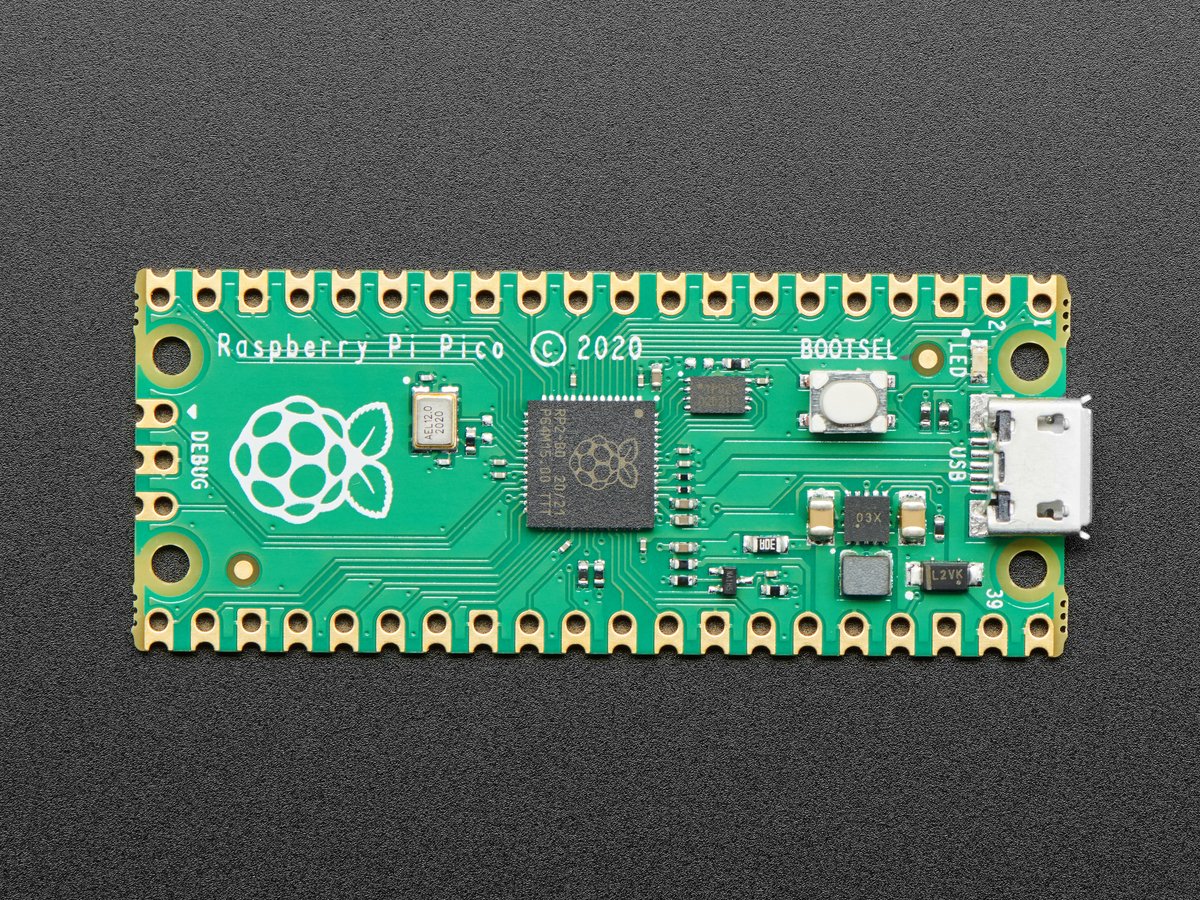
The Raspberry Pi Pico is a new low-cost microcontroller board from the Raspberry Pi Foundation which we will be using for the course. It supports programming in CircuitPython, MicroPython, and C++. Please note this device uses 3.3V logic (not 5V) so not all Arduino circuit examples are compatible. More details: Raspberry Pi Pico datasheet
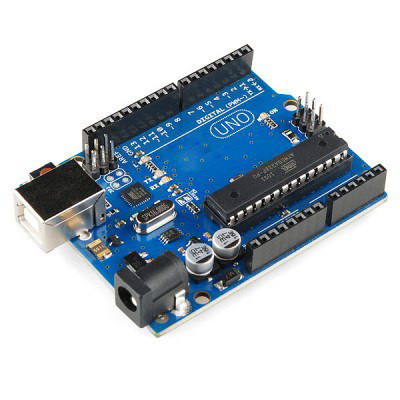
The Arduino UNO has been a workhorse for physical computing teaching for years. More details: Arduino Language Reference, Arduino Uno circuit diagram, Arduino Uno Hole Dimensions Drawing
Breadboarding and Wiring¶

This small breadboard is sometimes useful for mounting an individual sensor circuit. The grid has 17 rows with no power busses.
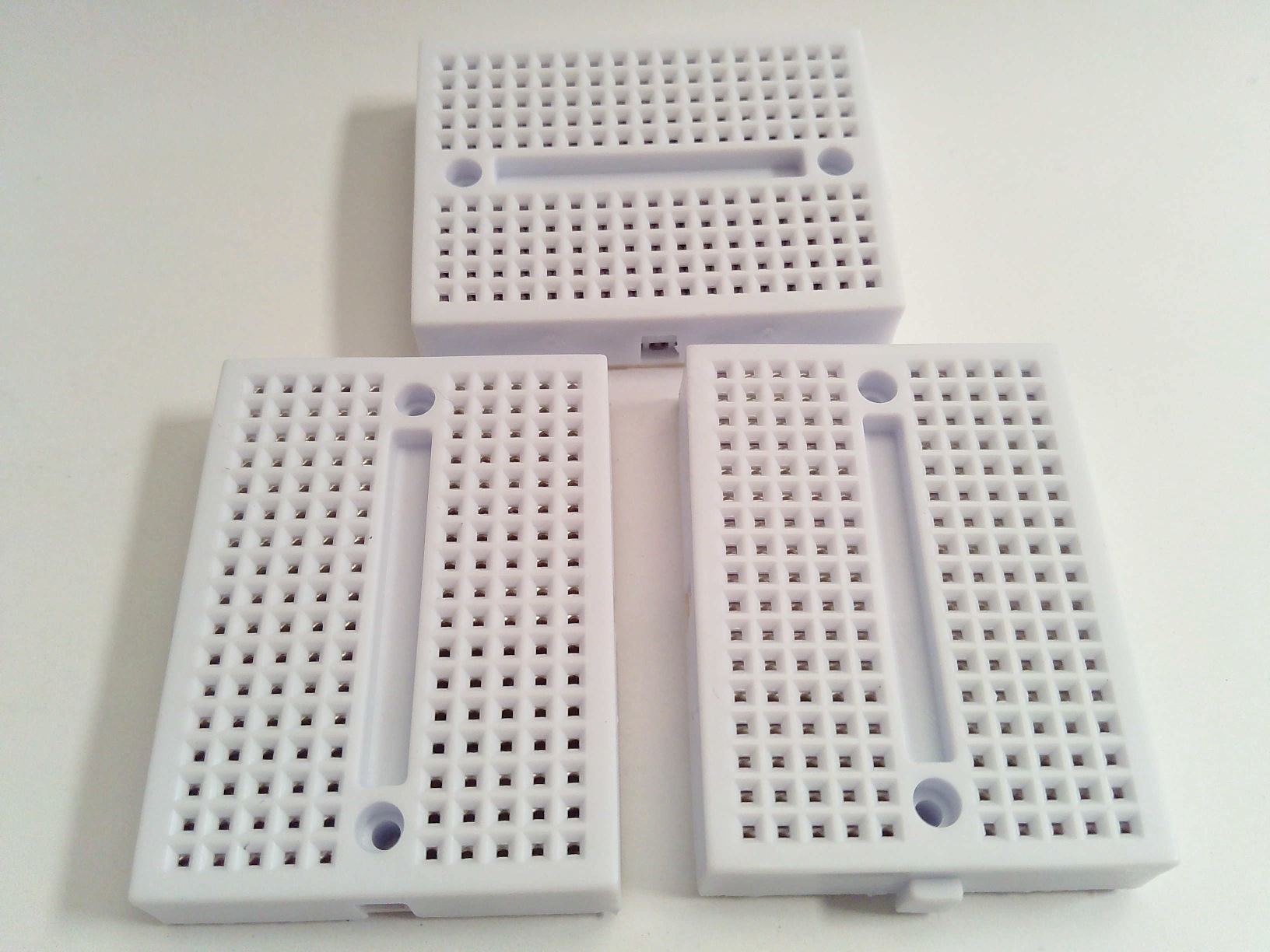
This medium breadboard is a convenient size for a Pico plus a small external circuit. The main grid has 30 rows, the Pico uses 20.
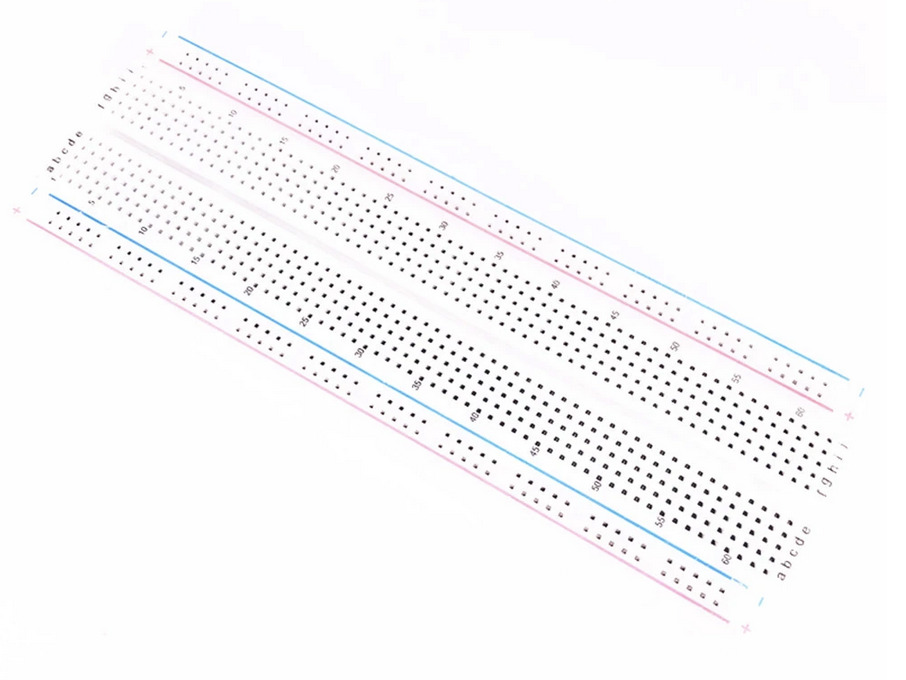
N.B. in some versions of this large breadboard the power busses have a break in the center.
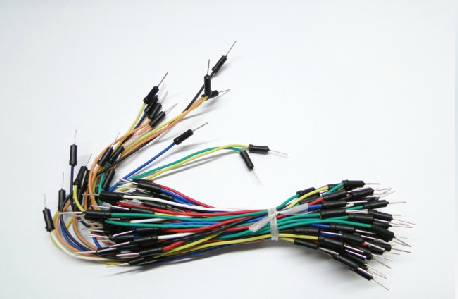
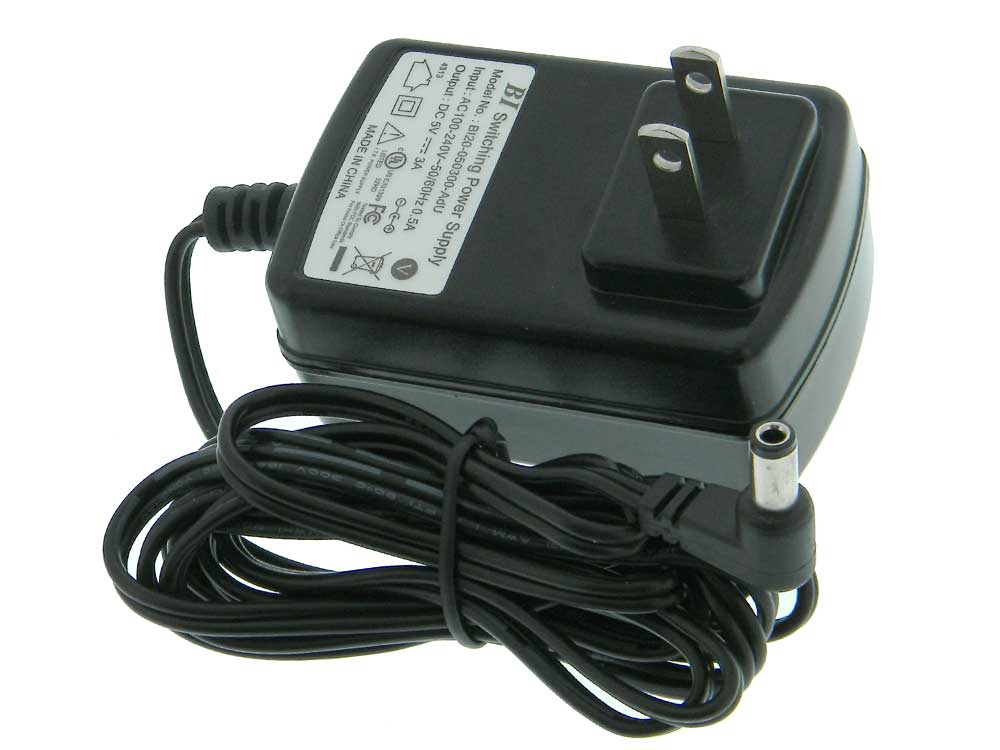
This power supply is useful for powering small gearmotors or large hobby servos. N.B. the barrel jacks have oversize holes and don’t mate reliably to adapters (part 788); a quick fix is to slightly bend the adapter pin off center.
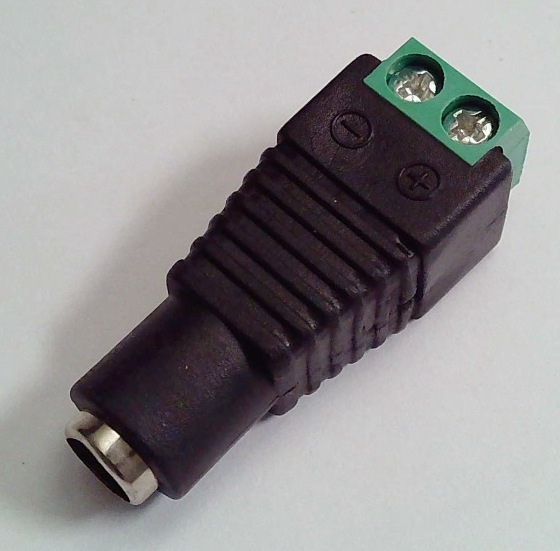
Barrel jack to screw terminal adapter intended for connecting the 5V power supply to wire leads.
Sensors and Switches¶

This active sensor emits invisible infrared light and detects when a nearby object reflects it back in the phototransistor sensor. It requires two external resistors to operate. The response time is fast, this can be used for non-contact motion sensing in conjunction with a slotted disc.
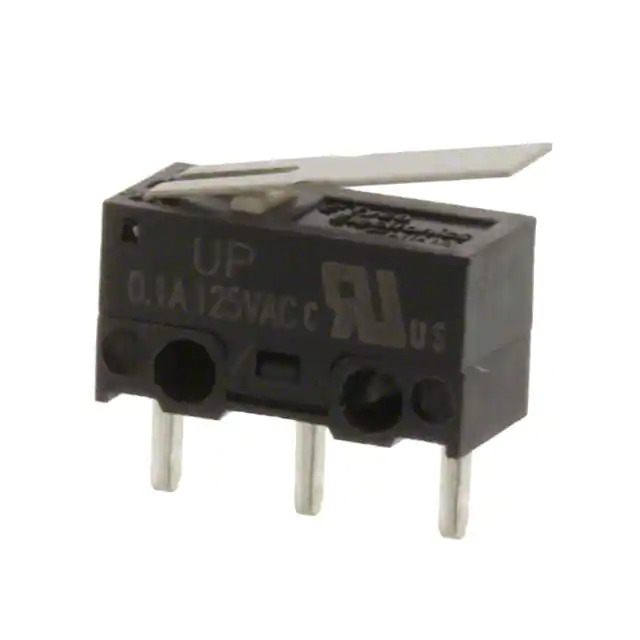


This sensor has resistance which decreases in bright light. The response time is relatively slow, it is intended for light-level measurement, not motion sensing.
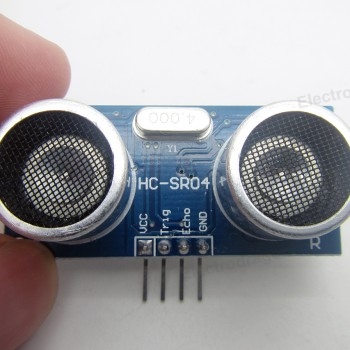
This active sensor emits inaudible ultrasonic sound pulses and detects the returned echoes.
Motor and Power Drivers¶

This driver can control two small motors bidirectionally using a pair of PWM and direction signals for each motor.
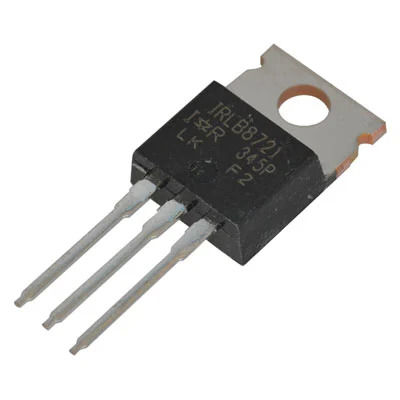
This is a MOSFET power transistor which can switch large currents using a logic-level control input. This particular part has a gate threshold low enough to work from 3.3V logic like the Raspberry Pi Pico. Typically these operate as high-speed ON/OFF switches with variable output produced using PWM.


Typical rectifier diode used as flyback diode in transistor driver circuits to absorb inductive voltages.
Resistors¶
The lab stocks carbon-composition resistors with 1/4 Watt rating and 5% tolerance in a wide range of values.


Misc. Components¶

Laser diode, 5 milliwatt, 5 Volt, 650 nm (red). Draws a visible dot. Intended for long-distance through-beam sensing or laser show displays.
Other Resources¶
The Physical Computing Lab Inventory has the full listing of available parts.
The 99-355 Intro to Arduino micro-course has a related visual parts guide.
Page generated on 2021-11-04.